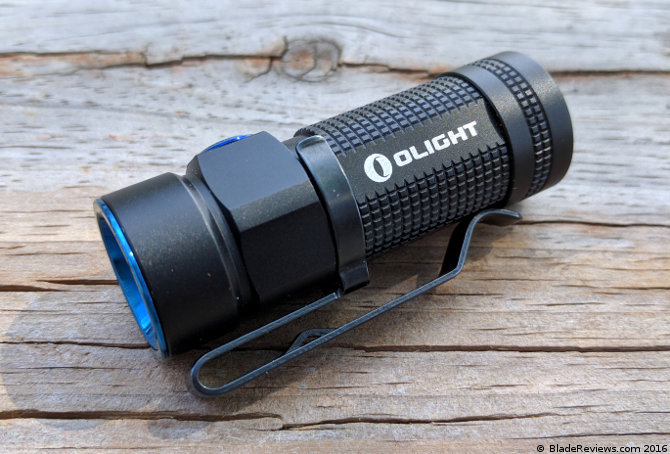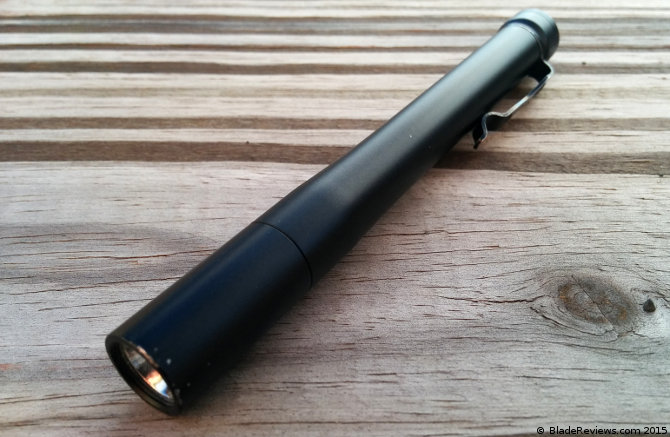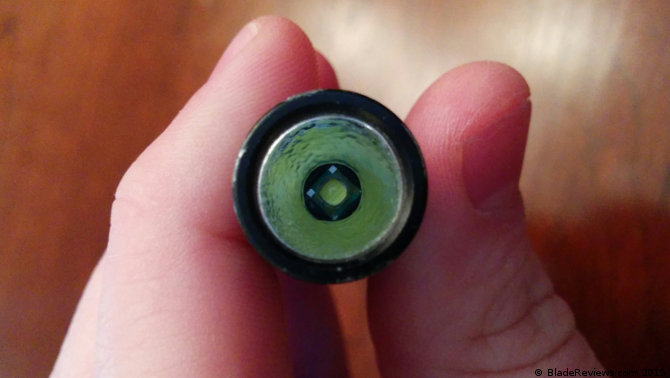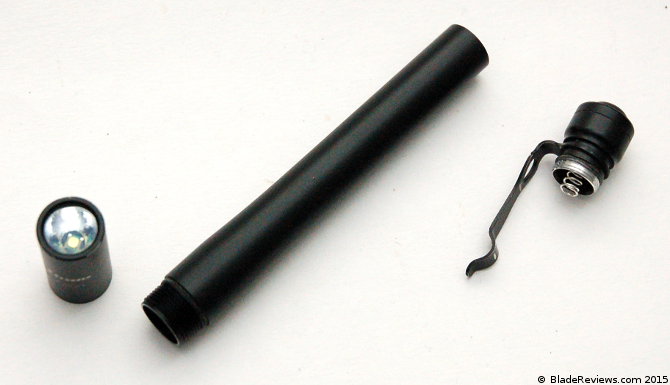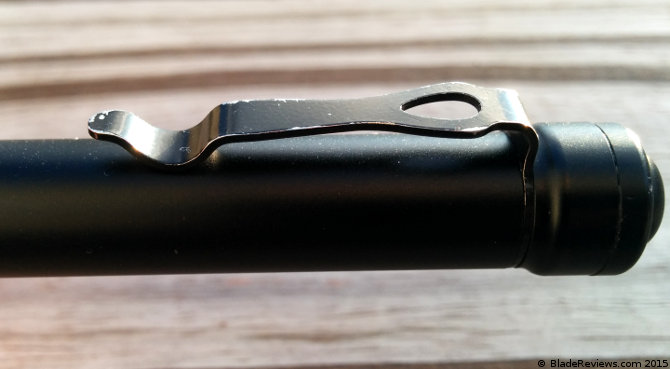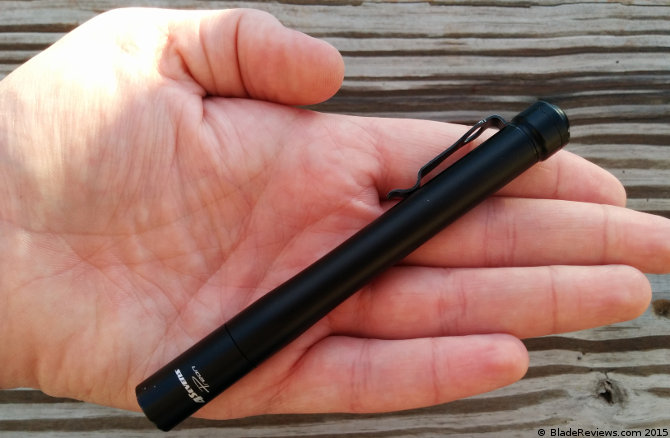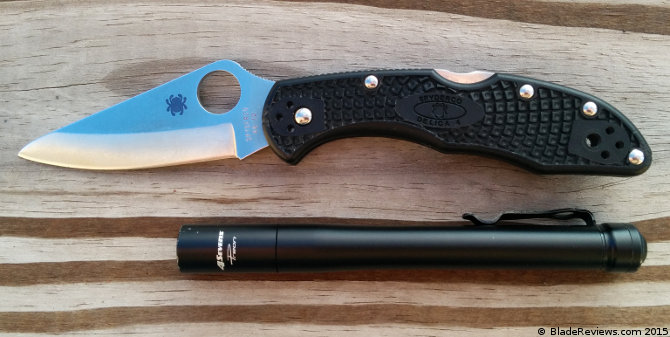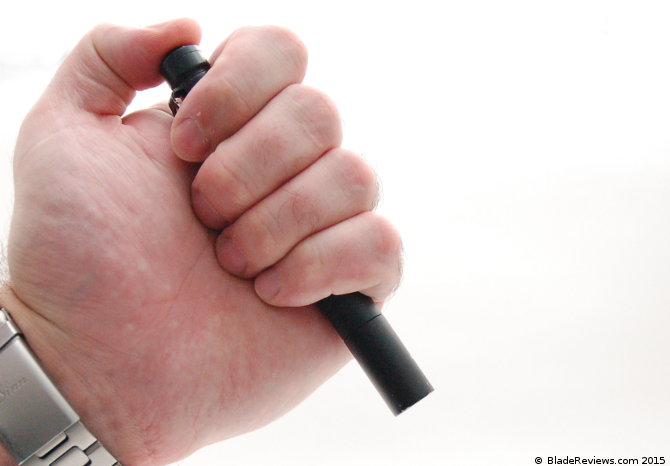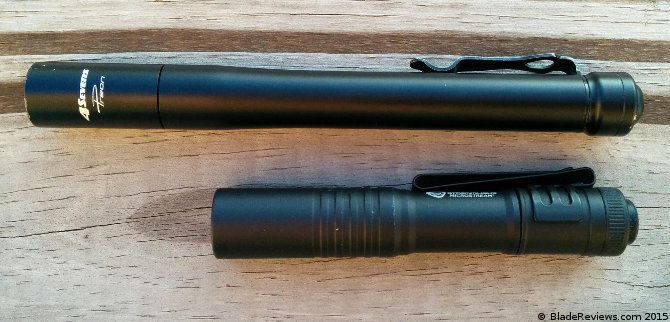Last Updated: September 16, 2019
With some pieces of gear appreciation takes a while. Advantages and charms are subtle, and only appear over a long period of use. With others, their positive qualities are immediate and obvious. Almost from the second you start using it, you understand and appreciate it.
So it was, for me, with the Olight S1 Baton. As soon as I had it out of the packaging and put in a battery, I knew I loved it. This is a phenomenal light. It’s less a case of perfection than one of consistent excellence in nearly every category. The things that are bad are minor, and the things that are good are so good that, in some ways, I feel like they couldn’t be improved.
Foolish thoughts, of course, but any time a product inspires such thoughts I think it’s worth it to sit up and pay attention. The Olight S1 Baton is a top-tier piece of kit.
General Dimensions and Construction
The Olight S1 Baton is 2 3/8” long, and ¾” across as its widest point. With the battery in, it weighs 1.6 oz. Very light, but the weight distribution is such that there’s a pleasant heft to the S1 with the battery in. The S1 Baton is available in raw or rose gold copper, polished or bead blasted titanium, or, like mine, in standard black anodized aluminum. It uses a 1xCR123a battery.
The fit and finish of the S1 is thoroughly competent. The Type III anodization is clean, and seems to be more durable than the job on my Microstream. The threads all work smoothly without any drama or a break-in period. The blue accents give this otherwise extremely utilitarian-looking design a little character without being obtrusive or corny.
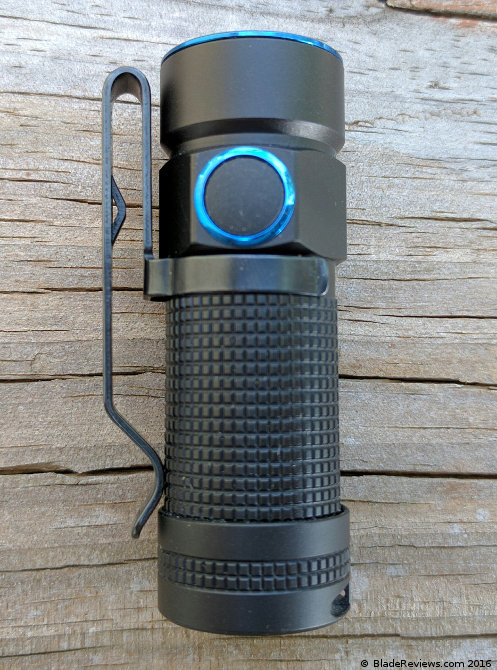
The S1 Baton is so-called because it features a magnet in the tail cap that allows you to stick it to something for hands free use (like a…baton? I don’t really get the naming convention). The magnet is removable, and before I got it I thought it was something I was going to get rid of, but I ended up really liking it. I keep it stuck to my nightstand lamp so it’s always in the same place if I go looking for it in the middle of the night. A surprisingly handy feature.
The S1’s clip is a friction fit clip. The clip is oriented for ‘tip up’ carry, if you will. Situated the way it is, you can clip it to a hat brim for hands-free operation without the need of an S-style clip. It runs almost the length of the light and is made of surprisingly thick steel.
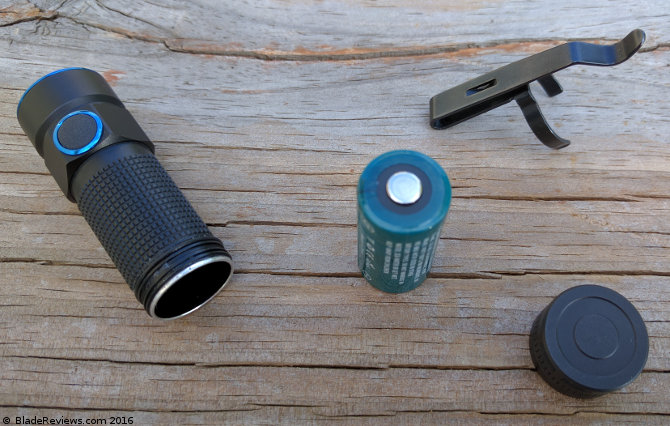
Instead of a standard reflector, the S1 utilizes a TIR optic. TIR stands for Total Internal Reflection. As a journeyman flashoholic I don’t understand all the attendant TIR arcana, but I do know that it is supposed to produce clean, even beams. I’ll discuss the performance below, but note here that you might be surprised at how the S1’s optic looks – I know I was. It’s concave, made from some sort of polycarbonate, with a raised piece in the center. Not bad, just unusual.
Output, Runtime, and UI
The S1’s specs feel very current, even months after its release. The high of 500 lumens is shocking to see, flaring out of a light this small. I don’t know how practical it is. I haven’t used it all that much for anything other than showing off, but it’s nice to know that it’s there if I ever need it.
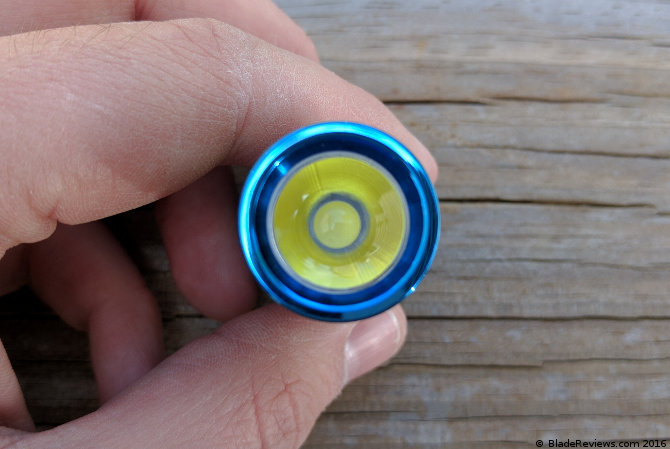
Much more useful is are medium and low at 80 and 8 lumens, respectively. The medium setting, for me, is ideal for illuminating the path during night walks. The 8 lumen low is deceptively bright, more than enough for checking under couches or searching for dropped keys in a parking lot. I was a little hesitant at the disparity between each of the modes, but Olight clearly knew what it was doing: these are thoughtful demarcations, each with their own uses.
The .5 lumen moonlight low is great. It’s bright enough to read by, but dim enough to be easy on your eyes and not bother a sleeping partner or freak out the cats. Moonlight lows seem like they are becoming more or less standard features on flashlights, and I can see why. Once you try it, it’s hard to go back.
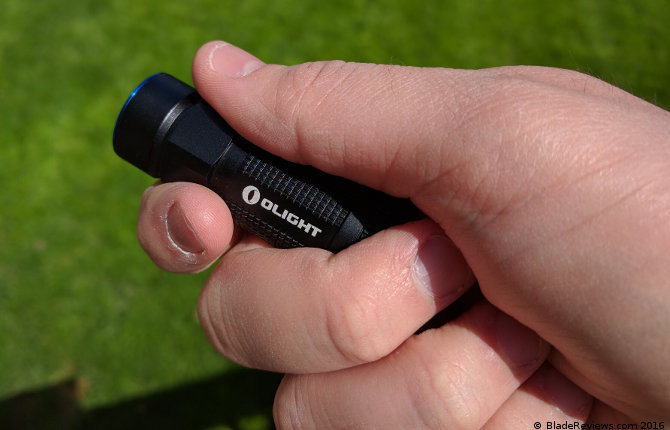
The only other light I’ve used with a TIR was an Armytek Partner C1, and its beam pattern was oddly textured and spotty. Thankfully, the S1’s pattern is nice and clean, even and white. Much more flood than throw, obviously, but that’s what you want in an EDC light most of the time.
Runtimes are pretty great. You get 1.5 hours on high, 6 hours on medium, 40 hours on low, and 25 days on moonlight low. I’m surprised that the medium runtime isn’t a little higher, but it isn’t dismal and I don’t use the medium often enough to care.
I think clickies are the best UI. They facilitate one-handed operation better than twisties and, when executed well, are equally as intuitive. The S1’s side button clicky is executed very well. One click turns the light on in the last mode used. Holding it down cycles through the levels. Clicking the button three times while on turns on strobe. You access moonlight by holding the button down while the light is off. Similarly, you can jump right to high by double pressing the button while the light is off. Simple.
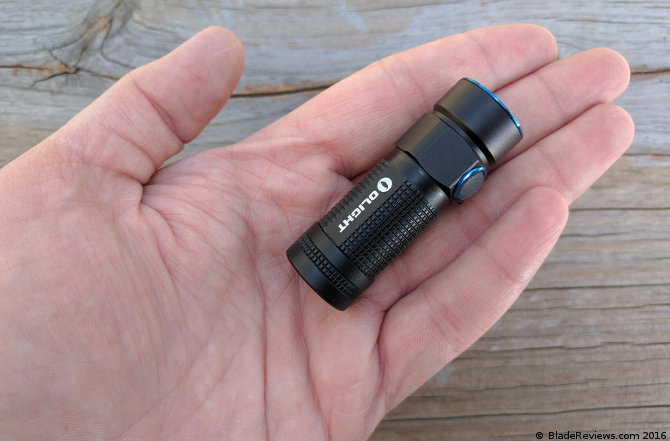
There are two hidden timer modes, one for three minutes and one for nine minutes, that can be accessed. I’ve never used them, and never will. I find these hidden modes to be more or less useless on any light, but if they’re sufficiently hidden I have no problem with them being around.
Ergonomics and Carry
The S1 isn’t so much small as it is short. This is a short, short light. It is almost hard to hold on to: the checkered texturing on the aluminum isn’t grippy, nor is the anodization. The aforementioned weightiness keeps the S1 more or less in place, and the flats of the hex-bolt collar give you a place to pinch it. It achieves decent grippiness through balance rather than texturing.
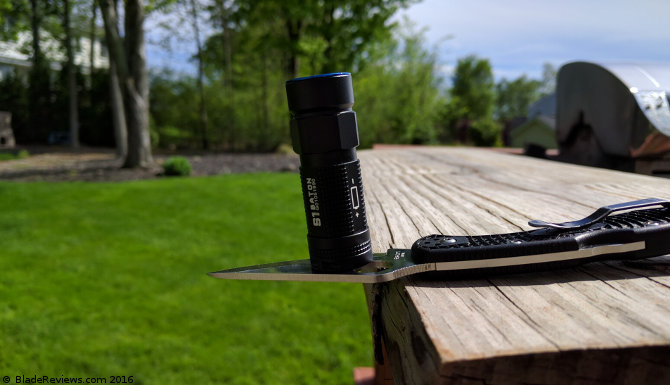
I had heard bad things about the clip before I picked up the S1. I was determined to come to it with an open mind. This clip is really bad. I mentioned above that it’s thick. It’s also tight. I had to fight this thing to get it clipped to my jeans, and when I did the rotund S1 occupied a surprisingly large amount of pocket space. Retrieval is a whole other chore. The retention notch and the angle at which the clip loops it over itself makes pulling this light out feel like you’re wrestling with a misaligned zipper. Terrible, terrible clip. Thank God it’s removable.
Without the clip, the S1 is manageable. It is short, which is nice, but chunky, which is not. Pocket carry is doable, coin pocket carry too, but nothing felt ideal. I do wish it were thinner, but I think its rotundity is a function of the type of battery it takes, and I’m just spoiled from the svelte AAA lights I’ve carried up until now.
Olight S1 Baton Review – Final Thoughts
I don’t buy a lot of flashlights. I average one a year. The S1 may very well slow down the pace even more. It gets the important stuff right. It’s a good representation of the best that the current generation of flashlight technology has to offer, maybe the best representation, and I have a hard time imagining why I would ever need another light.
I mean, I’m sure I will get other lights at some point. The Paramilitary 2 may be all the knife I’ll ever need, but I’ll be damned if I’m not going to keep buying and carrying other knives as well. But, just like with the PM2, I’m sure the S1 will remain in my collection. It’s too good not to have around. Whether it’s your first light or your fiftieth, the S1 is immediately, obviously excellent.
- Cree XM-L2 CW LED. Maximum light output up to 500 lumens.
- PMMA TIR lens with a 90% light transmittance rate.
- 3 standard modes: 8 lumens, 80 lumens and 500 lumens.
- 2 special modes: 0.5 lumen moonlight mode and a 10Hz strobe mode.
- Runs on: 1x CR123A or 1x RCR123(Battery not included).
I recommend buying the Olight S1 Baton at Amazon. Thank you for reading.
